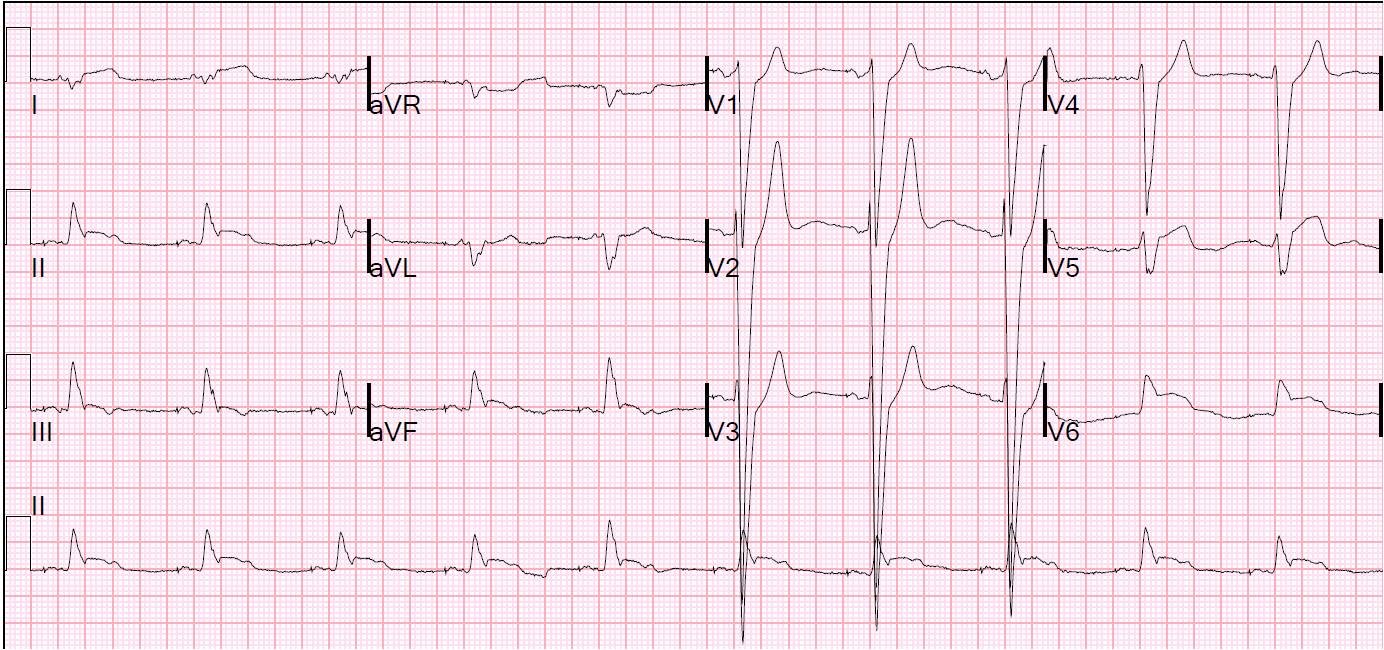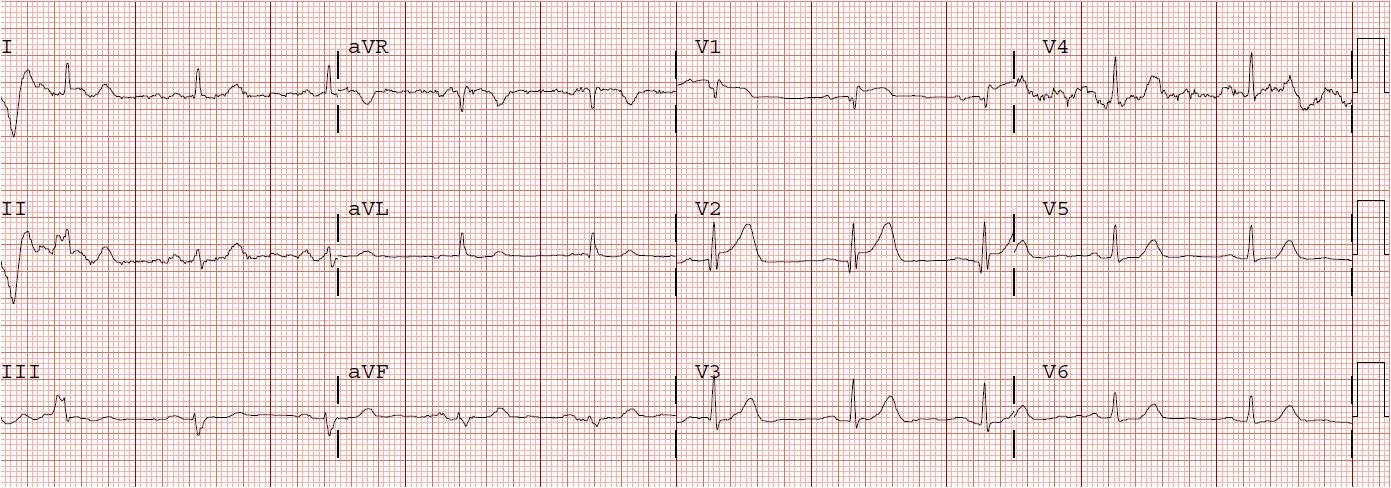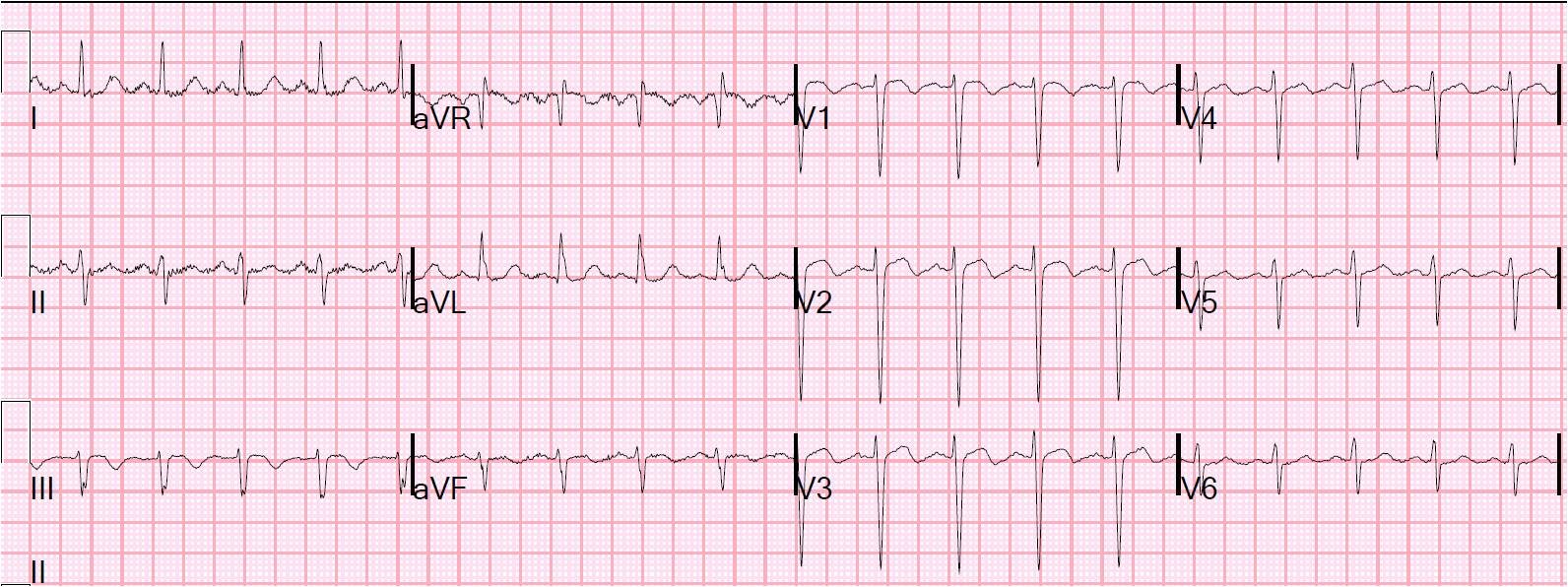This 74 yo male had just returned to his unit bed after successful PTCA of tight lesions of the first diagonal and obtuse marginal coronaries. He complained of chest pain. This ECG was recorded. The previous is below.
 |
| Here, all ST segment are appropriately discordant; none excessively so. Maximum discordant ST elevation is in lead V2, (at 4 mm; but this is only 7% of a 60 mm S-wave) |
Suddenly, the patient became hypotensive. The physician (one of our fine EM residents) caring for the patient did an immediate bedside ultrasound. This showed a loculated hyperechoic pericardial fluid (blood with clot).
Patient returned immediately to cath and this confirmed a ruptured coronary artery with pericardial bleeding. A balloon pump was placed and the patient went for immediate CABG.
The circumflex was dissected and will be bypassed any moment now.





In the first ECG is that artifact or an atrial pacer?
Good eyes! It's an atrial pacer.
kindly tell me wer is artifact?
It's not an artifact; each p-wave is preceded by a spike that is an atrial pacer.
theres alot of voltage going away from anterior leads, transition at v5 , do we excpect to see posterior axis in transverse plane if we do posterior leads? and why so ? was the fluid posterior?
thanks
NidalIsmail@LinkedIn
LBBB transition may be at V4-V5 or V5-V6 depending on a lot factors, including but not limited to lead placement and anatomic variation.
Are those a look of the LV/LA in the parasternal long axis view?
Very interesting cases sir, very informative. I learned a lot from these 2 cases. But I just have a query and I need your help, sir. In typical LBBB, the morphology of QRS complexes in D1 and aVL are monophasic R waves, but in the 2nd case the QRS complexes in D1, aVL are negative, So how do you explain , sir Steve Smith. Thank you.
It is a matter of lead placement, heart orientation in the chest, and variability of the conducting system.
Thank you , sir! Can we identify this ECG as IVCD sir?
Yes, it is IVCD that approaches LBBB